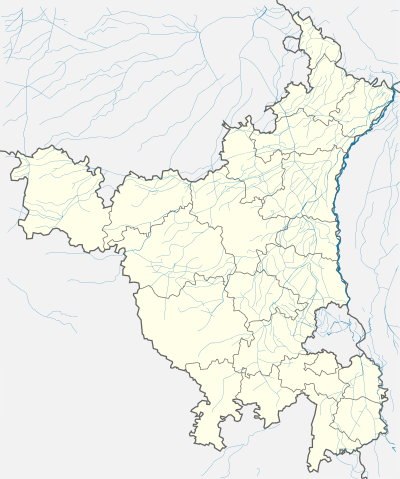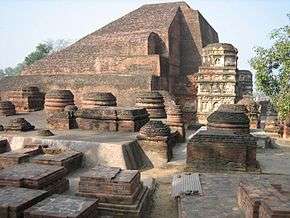Asigarh Fort
| Asigarh Fort | |
|---|---|
|
Native names Hindi: असीगढ़ किला Hindi: पृथ्वीराज चौहान का किला English: Prithviraj Chauhan's Fort | |
 Location of Asigarh Fort in Haryana  Location of Asigarh Fort in Haryana | |
| Location | Hansi, Haryana, India |
| Coordinates | 29°6′19″N 75°57′47″E / 29.10528°N 75.96306°E |
| Area | 30 acres (12 ha) |
| Height | 52 feet |
| Built | 12th century |
| Built for | Prithviraj Chauhan |
| Demolished | 1857 |
| Restored | 1937 |
| Restored by | Archaeological Survey of India |
| Architectural style(s) | Hindu |
| Governing body | Archaeological Survey of India |
Asigarh Fort, also called Hansi Fort is located in Hansi town of Haryana, India. It is also known as Prithviraj Chauhan' Fort or Prithvi Raj Chauhan Ka Qila and has been declared a centrally protected monument by ASI.[1] It has completely been converted into a mound.[1] A long pillared structure with a flat roof is situated on the top of the mound and is known as Baradari.[1]
History
Hansi fort or Asigarh Fort has long history with little clarity about earlier period and the present fort was built with materials of earlier fort of a period about 7th century C.E. It is believed that original fort was built by Harsha or his Prabhakaravardhana. As per British library, is believed to have been founded by Anangpal Tomar, the Tomar king of Delhi.[2] The ancient coins of period before Chirst were also found in this area.[3] Later, the fort was reconstructed by Prithviraj Chauhan in the 12th century. The fort was again built by George Thomas in 1798 when he carved out his own kingdom consisting of Hisar and Rohtak districts with capital at Hansi.[3] British Indian Army built a cantonment in this fort after George Thomas surrendered to British Raj in 1803.[3] During the revolt of 1857, the cantonment was abandoned and the fort was damaged.[3]The prisoners of Kuka movement were imprisoned in this fort during 1880s.[4]
Architecture
The fort is said to be one of the most impregnable forts of ancient India[3] The walls of the fort are 52 feet (16 m) high and 37 feet (11 m) thick. At the south end of the fort is a big gate added later by George Thomas.[3] The carvings on the walls assign it to be of Hindu origin. 57 bronze images of Jain thirthankars were found during excavation in the fort.[1]
Char Qutub Dargah
A mosque is also located inside the fort complex which was added after the defeat of Prithviraj Chauhan.[3]
External galleries
- 51-image online picture gallery of Asigarh fort taken by American Institute of Indian Studies in 2008 CE
- Online picture gallery of Indo-Islamic monuments of Haryana taken by American Institute of Indian Studies in 2008 CE
External Sources
- Field study and documentation by American Institute of Indian Studies in Jan-Feb 2010.
See also
References
- 1 2 3 4 "History of Hisar". District Administration, Hisar. Retrieved 3 July 2012.
- ↑ http://www.bl.uk/onlinegallery/onlineex/apac/addorimss/t/019addor0004796u00000000.html
- 1 2 3 4 5 6 7 "Gazetteer of Hisar" (PDF). Revenue Department, Government of Haryana. Retrieved 3 July 2012.
- ↑ Singh, Jaswindar (1985). Kuka Movement: Freedom Struggle in Punjab, Documents, 1880-1903 A.D. New delhi: Atlantic Publishers. p. 217. Retrieved 6 August 2015.

